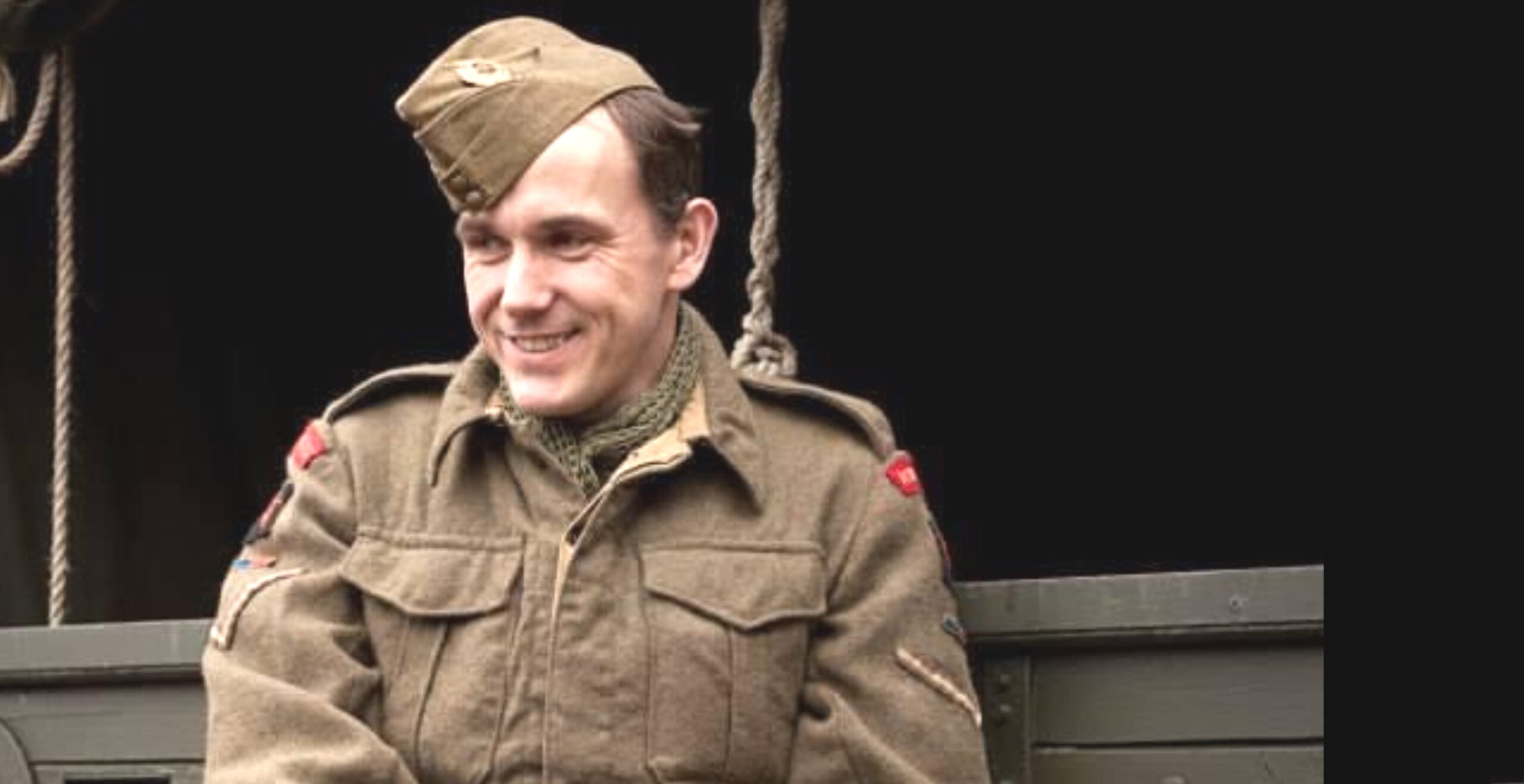A Reenactor’s Story
You could say that my personal re-enactment story started as a child. I was not only influenced by my father, who enjoyed competitive pistol shooting and was an avid collector of original English Civil War arms and armour, but also my grandfather who served during World War Two in the Royal Engineers, and went through experiences at Dunkirk, North Africa, D-Day on Sword Beach and Germany.
Growing up with arms, armour and live firearms had quite an influence. My grandfather’s stories about the war also helped develop my interest in World War Two. This interest developed over many years, as I enjoyed reading about the history of the war and collecting. Dad took me to the gun club from the age of nine and taught me how to shoot and fire live ammunition, using genuine World War Two firearms that he and his friends owned. This gave me an unusual depth of understanding and interest for a child!
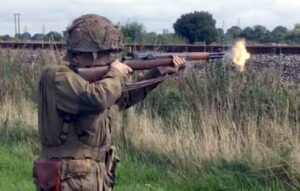
My Dad’s interest in the English Civil War helped him develop friendships in the Civil War re-enactment world, which in turn led him to learn about Roman re-enactment, another part of history he was passionate about. Living with all this kept my interest fueled until leaving home, when work interests in engineering helped guide me in another direction.
My knowledge and interest in World War Two never left me and then one day, years later, I happened to walk into a shop to ask about having stationary and signs made. The owner asked me if I could produce some work for them.
An artist and photographer, I was asked to draw a portrait of an elderly looking gentleman and a young man in what I knew was World War Two U.S Army combat uniform. Having completed the task, I went back and asked what the picture was about, to be told it was a picture taken in Normandy for the D-Day celebrations of a U.S veteran who had landed on Omaha beach. He was having his picture taken with a re-enactor, the shop owners son.
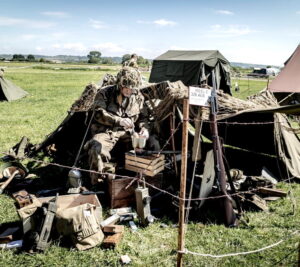
We started talking about the history of WW2 and their interest in re-enactment, and it didn’t take long before I was asked to come along with them to the next event that was being held, a local event to celebrate VE Day. I was asked to take photographs of their group, who were the only group attending the small event at Buile Hill Park, Salford.
After their group saw the developed photos, it was their wish that I attend the next event as their photographer and as such would possibly find it more fitting to be in uniform: wearing uniform also gave you free entry to the event. I was taken to their supplier, from whom I had bought as a teenager, and who now sold me my first U.S. uniform, totaling £70. I was now a member of their group.
During my years with that group I served as their photographer, battle leader, choreographer and pyrotechnician, earning my way through the ranks from private to Captain.
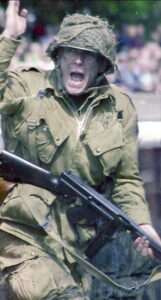
When asked by other re-enactors some years later to start a new group, I was originally doubtful. However after some thought and some research decided that it was a good idea, and in the first year our group grew to thirty members. Like most groups, the numbers fluctuated until eventually the numbers reduced. Due to poor health, I decided not to recruit any new members until my health improved.
Once it had improved I decided to start again, with the focus on detail and accuracy: wearing and using real equipment and uniforms when and wherever possible and at every opportunity. Also, teaching had now become an important part of the group’s activities. I had been asked to teach RAF cadets and regulars, which led me to becoming part of the RAF reserves as an officer instructor, teaching WW2 history as well as other subjects.
Since then the group has continued to refine and improve on its standards. We not only use original uniforms but also film special effects to make reproduction combat uniforms look battle worn and dirty, which helps greatly during teaching and re-enactment. All of these methods and practices are helped by using strict techniques and guidelines developed by Helen Patton (General Patton’s granddaughter and friend) and by the Association of Heritage Interpretation of which we are a member.
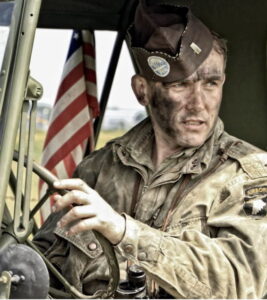
We hope to continue for another twenty years and make improvements. For example, when I first started re-enacting everyone in that group wore clean uniforms. I decided to make mine dirty, and that changed the ethos within the group, for the better. Now there are many new re-enactors who do not hesitate to make the their uniforms look dirty.
It isn’t just about how battle hardened you look, but how well you can wear a Class A uniform – a best dress uniform. How well do you polish your boots, how do you treat your new leatherwork, holsters and combat boots? I study and treat mine according to the original manuals. Not only do your uniforms look accurate and are accurate, but how professional are you? How important is the history to you and how well do you know it? How devoted are you to the veterans?
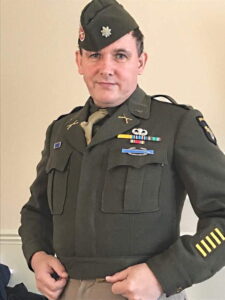
Our Ethos is also our passion:
Uniform.
Wear the uniform accurately and with pride.
Dress uniform should be worn pressed and clean. Combat uniform should be combat ready or combat stressed. Remember you are depicting someone from the past. Think how you would like to be depicted by future generations.
Service Personnel & Veterans.
Be the serviceman and servicewoman you depict. Be the rank. Be professional and courteous as service personnel would have been.
Honour.
Do not abuse or dishonour the uniform or rank.
Conduct yourself with dignity in uniform.
History.
Know your history, about the unit, regiment, division you represent & depict.
Research, research and research again.
Our motto:
WE SHOW OUR APPRECIATION THROUGH EXCELLENCE IN RE-ENACTMENT.
WWW.326AEB.COM
By Jay Derby.
